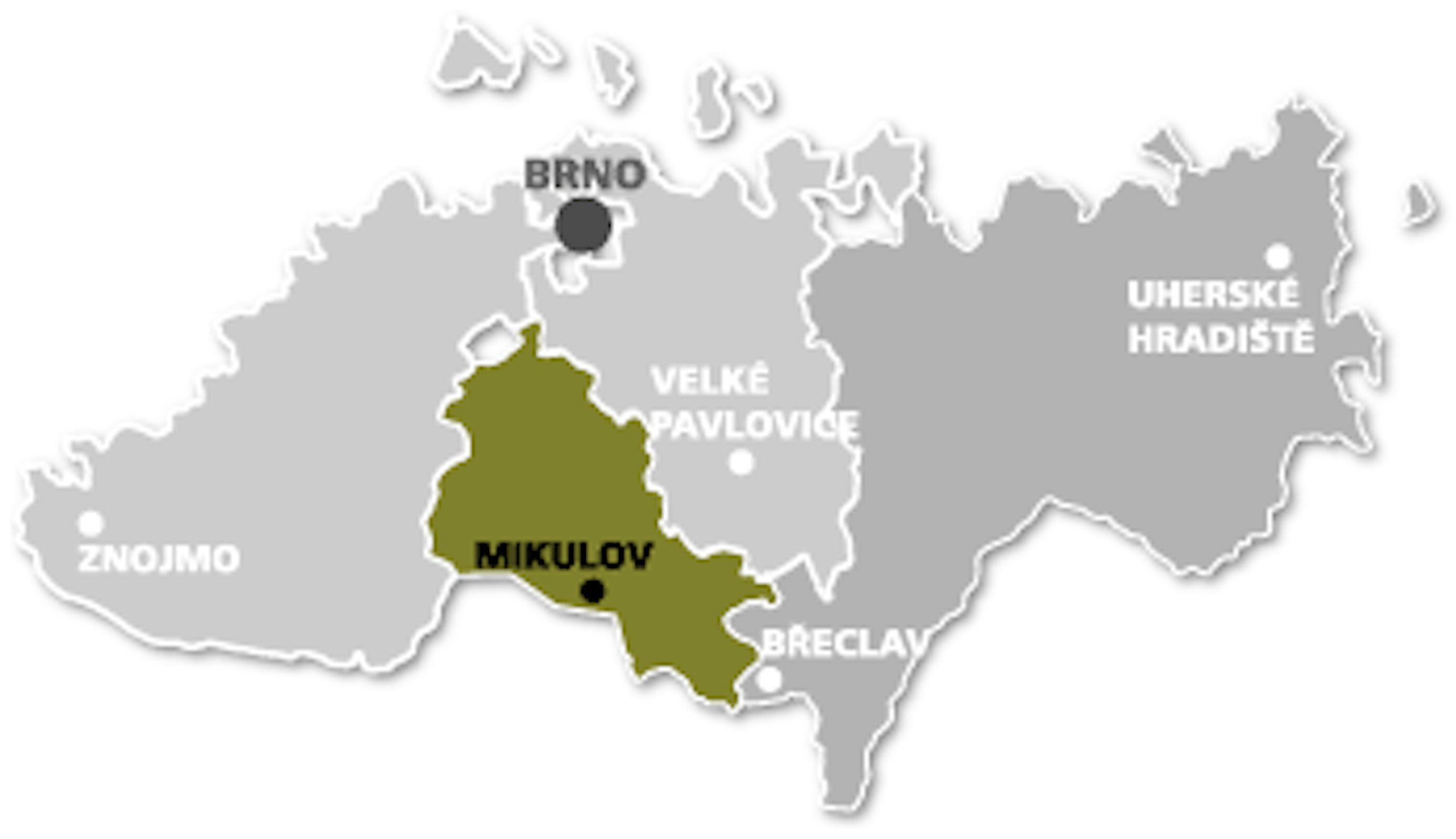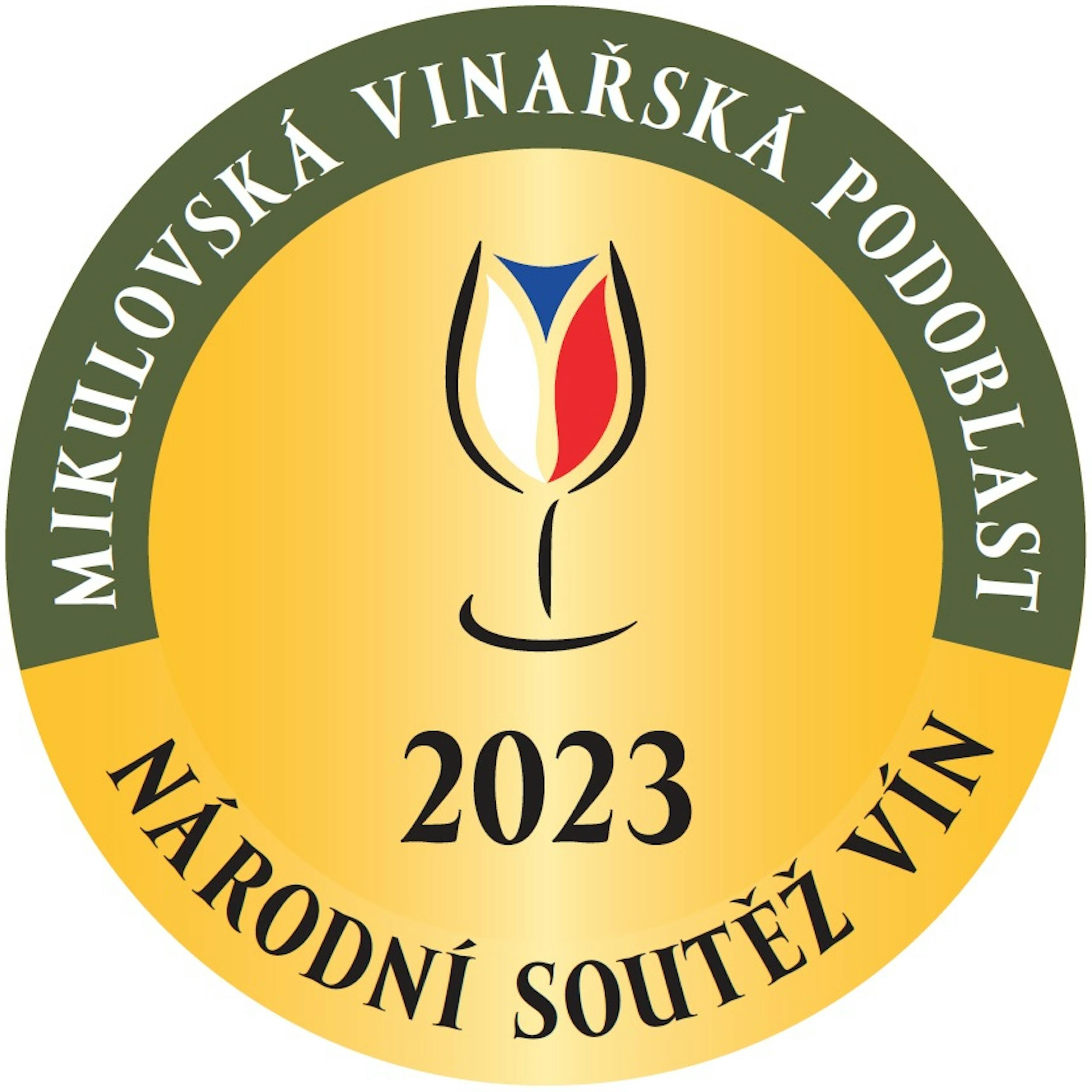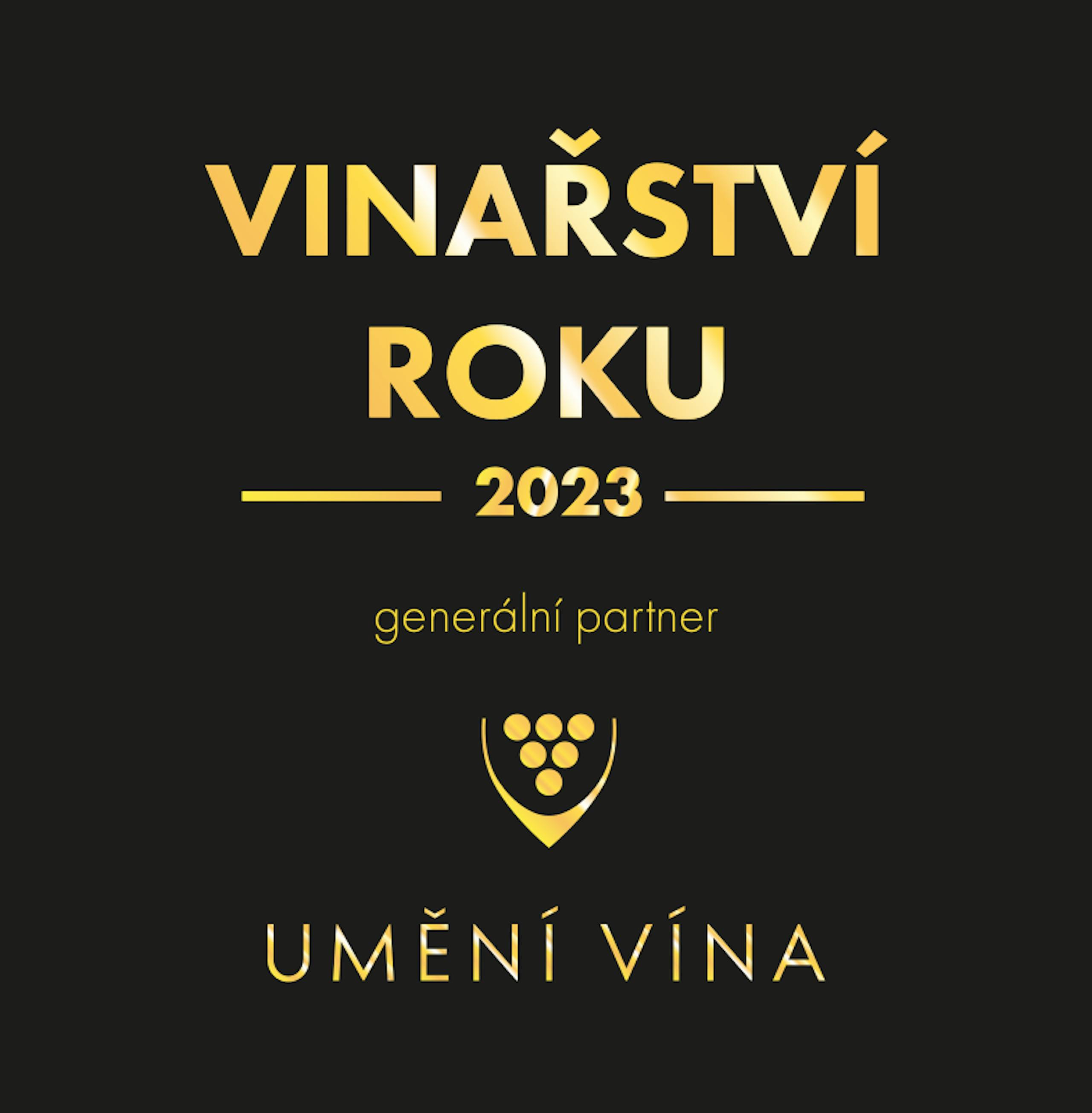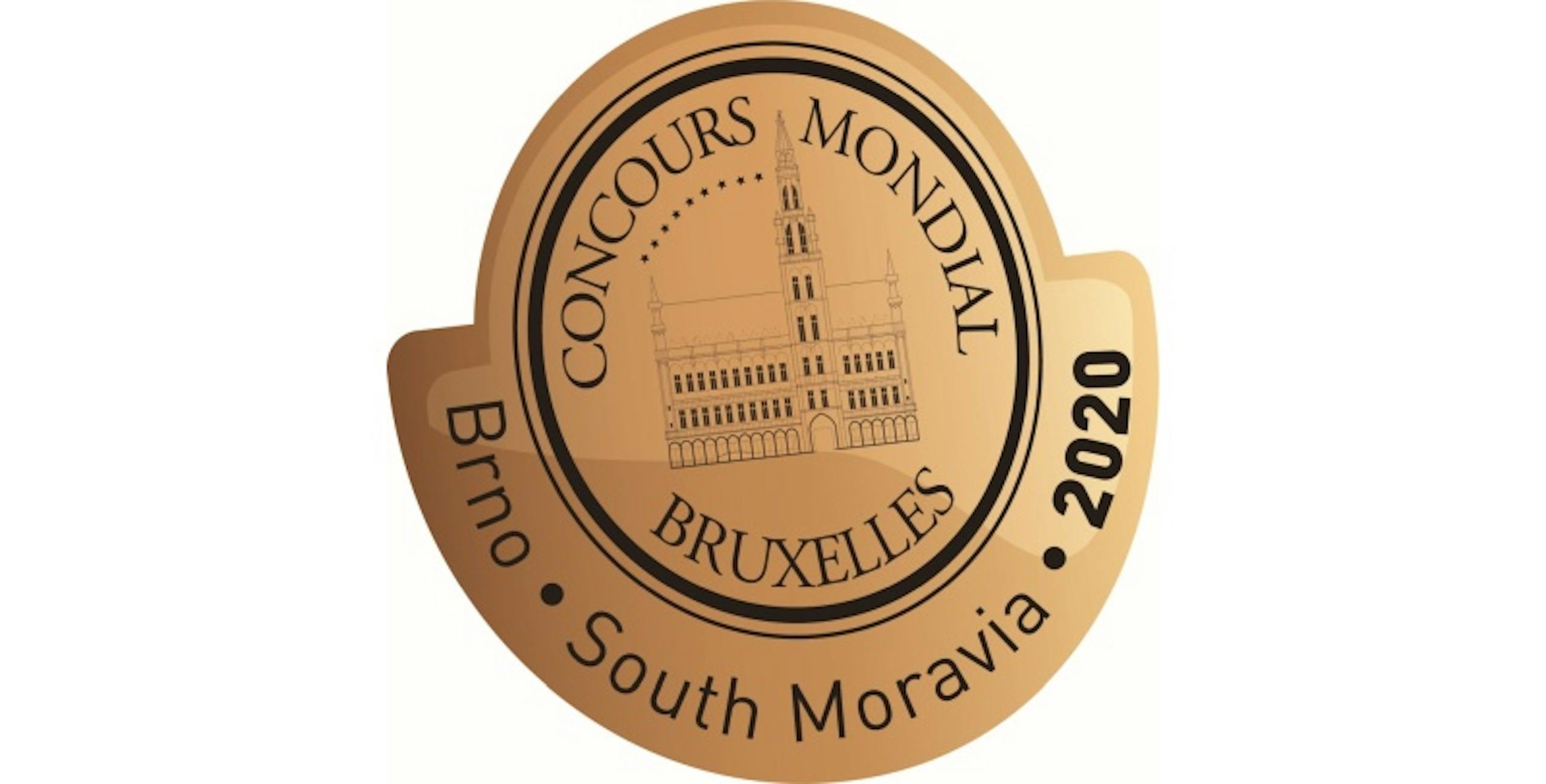Mikulov wine sub-region

Total area: 4 750 ha
Wine communes: 30
Individual vineyards: 182
The Pálava ridge cut into the meander of the Dyje river is unmistakably the dominant feature of the southernmost corner of Moravia. The sun here knows how to burn in such a way that the chalk cliffs give the impression of being somewhere in the sunny south of Europe. The white stone ruins of the castles watch attentively over the wine cellars below as they have done for centuries. Neat looking rows of vines, interwoven with twisting wine trails extend as far as the eye can see. It only remains to say: welcome to Mikulov!
From history to the present day
During the last century the archaeological remains of a Roman military camp dating from the 3rd century AD were discovered in the place called Hradisko on the site of a former settlement at Mušov. Roman legionaries of the time planted the first vineyard; mainly for health reasons since they drank wine mixed with water and did not want to resort to importing wine from home.
Winemaking in Moravia underwent a great expansion during the era of the Great Moravian Empire and the first credible evidence of the extensive cultivation of vines in Mikulov comes at the turn of the first and second millennium which we have from the discovery of Slavonic settlements in the area, for example the site of a walled settlement at Vysoká zahrada near Dolní Věstonice. The greatest expansion in the region‘s viti/vini-culture came after 1249, when the Mikulov and Valtice regions became part of the Liechtenstein estate. Trading in wine was the source of income for aristocracy and citizens alike and many communes gained a considerable economic standing thanks to wine production. Let us mention for instance the communes of Sedlec, Dolní Dunajovice, Pavlov and Perná. A significant role in the development of viti/vini-culture in Moravia, in particular around Mikulov, was played by anabaptists, who arrived in the area from today's Switzerland in the 16th century bringing with them in all probability the Sauvignon Blanc variety and, what was even more important, their modern working practices in both grape growing and wine making. Mikulov was the first place they stopped and where they were given asylum.
Amongst the various documents, charters, deeds of covenant, seals of approval, rules and privileges from that era we also have beautiful coloured maps of various wine villages and their vineyard sites. The general plan of the Mikulov domain including vineyards is an historical rarity dating from the year 1802. Other valuable documents that have survived to this day are maps of fields and vineyard sites in the commune of Perná and vineyard maps of Strachotín.
Grape varieties
On the limestone soils found in the area surrounding the Pálava hills Ryzlink vlašský(Welschriesling, Riesling Italico) has found its true home, which renders a fresh extractive wine with its own unmistakable character and special minerality. This primeval grape variety makes few claims on the soil, but it does like sunny south-facing slopes – which are plentiful around here.
Ryzlink vlašský, along with Veltlínské zelené (Grüner Veltliner), has formed the basis of the Pálava vineyards since time immemorial, however, it has nothing in common whatsoever with the noble Ryzlink rýnský (Riesling), either genetically or historically, even the Italian or Welsch (meaning foreign) part of the name probably does not mean that it actually came from Italy. In the best vineyard positions on the south-facing Pálava slopes, which are mostly found around the commune of Perná, Ryzlink vlašský gives wines with a fresh mineral character and a higher content of aromatic substances. Apart from these, varieties such as Chardonnay, Sauvignon, Rulandskému bílé (Pinot Blanc) as well as Rulandské šedé (Pinot Gris), can be found. Red wines are represented by Svatovavřinecké (St. Laurent), Rulandské modré (Pinot Noir) and FrankovkaFrankovka (Lemberger a.k.a. Blaufränkisch). Plantings of French varieties such as Merlot and Cabernet Sauvignon also look to have a bright future here. Newly crossed varieties Pálava and Aurelius were created in the Wine Research Institute of Perná, while the red variety Neronet first saw the light of day in nearby Lednice.
Vineyards – soils and climate
Pálava, a place with an unimitable atmosphere, stands out precipitously from the mildly undulating landscape of the flood-plain forests of the lower Podyjí. Its limestone cliffs were created by the Tertiary Alpine formations probably as the western tip of the Small Carpathian range overlapped by younger Tertiary sediments.
Pálava offers a unique location for the cultivation of Vitis Vinifera in this part of the northern Pannonian lowlands, where undulating landscape and higher altitudes are normally quite rare. The warm and dry weather conditions are influenced by the continental climate from the east as well as the Mediterranean climate from the south. The rocky subsoils are rich in calcium and the slopes on the foothills contain calcareous loess formed from the sediments of the later ice age as well as older chalky clay. In the southern part of the Mikulov sub-region, around Valtice, as well as in the area surrounding Novosedly and Dolní Dunajovice, sandy soils on clayey sediments predominate. And it is exactly from this, the deep loess or the light loess loam, that the vines get the wide range of nutrients essential for the creation of aromatic and highly expressive extractive tones. All this helps produce wines with a wholly different character from those emanating from other sub-regions.
> Directory of winemakers of the Mikulov sub-region
Directory of wine-related tourist destinations in the Mikulov sub-region:
> winemaking museums
> matters of wine-related interest
> calendar of wine-related events
> Directory of other tourist destinations and services in the Mikulov sub-region on www.jizni-morava.cz
Wine trails in the Mikulov sub-region:
Mikulov wine trail, Educational wine trail Mikulov, Educational wine trail Valtice,
Recommended www pages with tourist information and wine-tourism programmes in Czech and English:
www.mikulov.cz - official web pages of the town of Mikulov containing ample tourist information including a cultural calendar and a database of hospitality services offered.
www.visitmikulov.com - web pages of the town of Mikulov aimed at general tourism. Here you will find information on history, landmarks and places of natural interest in and around the town. It also contains a photogallery.
www.mikulovskoregion.cz - official web pages of the Mikulov region. This contains tourist information including places of interest in the villages of the region including an extensive database of services offered including accommodation.
www.novosedlynamorave.cz - presentation of wineries in the commune of Novosedly as well as the Stará Hora educational wine trail.
www.lednice.cz - official web pages of the town of Lednice. In the "turistika" section you will find an extensive amount of information on services offered as well as maps.
www.pasohlavky.cz - web pages of the communes in and around Pasohlávky including recreational possibilities. Here you will find plenty of information about the possiblities for pursuits such as swimming and water sports in the area around the Horní Novomlýnská reservoir. Also board and lodging information.
www.radnice-valtice.cz - official web pages of the town of Valtice. Here you will find information on the history and matters of tourist interest in the town of Valtice and the Lednice-Valtice region in general, including a database of the services offered.
www.salonvin.cz - presentation of our most important wine contest - the Wine Salon of the Czech Republic. A list of wines available for sampling in the Salon, opening times, e-shop.
Tourism and wine making information centres:
Tourist information centre Mikulov
Náměstí 1, 692 01 Mikulov
tel.: 519 510 855
e-mail: tic@mikulov.cz,
www.mikulov.cz
Tourist information centre Lednice
Zámecké nám. 68, 691 44 Lednice
tel.: 519 340 986
e-mail: tic@lednice.cz,
www.lednice.cz
Tourist information centre Pasohlávky
Obecní úřad Pasohlávky, 691 22
tel.: 519 427 624
e-mail: tic@pasohlavky.cz,
www.pasohlavky.cz
Tourist information centre Valtice
Nám. Svobody 4, 691 42 Valtice
tel.: 519 352 978
e-mail: tic.info@radnice-valtice.cz
www.radnice-valtice.cz
Znojmo wine sub-region | Velké Pavlovice wine sub-region | Slovácko wine sub-region



